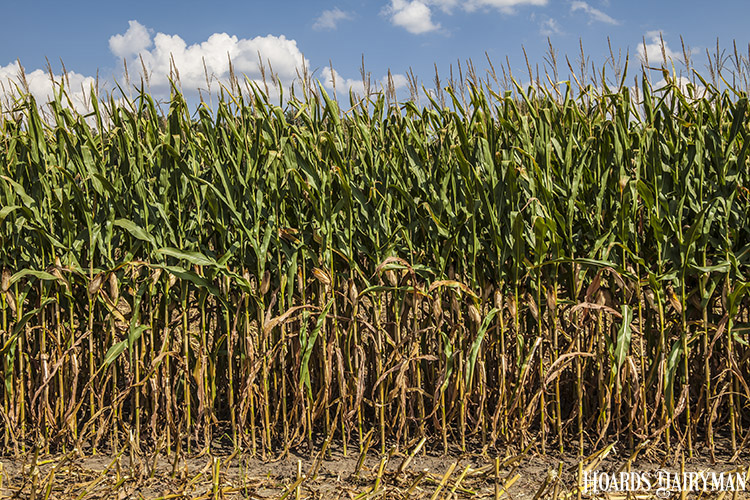
Picture movie-goers walking into a theater. Those people entering the theater were initially expecting to see a documentary film, but instead, an action movie begins, with surprises, constantly moving targets, and unpredictable scenes. The unexpecting viewers who just made way into the theater may or may not even recognize what hit them.
Your corn harvest for silage could play out similarly if your agronomy and harvest crew move slowly this year, like in a drama movie.
In speaking with agronomists, I increasingly recognize the 2021 growing season is unique. This story seems redundant, as 2018 and 2019 were also unique. However, the growing season this year for many has been marked by drought or stress to some extent. The exceptions to this are the Tri-State, northeastern, eastern, and southeastern U.S. regions. But for the other roughly two-thirds of the U.S., growers have experienced drought to some extent.
Indeed, corn is stressed. However, the plant genetics in today’s corn have substantially improved and are more drought tolerant relative to seed genetics a decade ago. The net result is the plants are hanging on and doing okay in most regions, despite the stress incurred to this point. However, in areas such as North and South Dakota and some of Minnesota, corn plants are in worse shape, with many acres being barren.
The focal point of this article isn’t the barren fields. The goal is to think about how stressed plants come into silage maturity, and to what extent the kernels develop. Grain fill is being determined for many acres, with corn needing rain to finish the year. For some, rain has come.
In general, after speaking with experienced agronomists from South Dakota to Wisconsin, I’m anticipating the silage harvest window to be earlier and possibly shorter in duration this year.
The reason?
Kernels may be smaller and may dry more quickly. This situation would equate to maturity and dry matter advancing more quickly. On this note, we need to pick up discussions with our crop teammates and step up our efforts in walking fields to monitor the corn crop for silage. It’s okay to be a bit early in monitoring, but being late can be detrimental.
Missing the ideal whole-plant moisture and kernel maturity window for silage can mean sizable economic losses for the year to follow. With an average high forage and silage diet, a 500-cow dairy will have roughly $250,000 invested in their corn silage after the feed is packed and under plastic. Many don’t fully grasp the economic investment made annually, but our attention should be laser focused on optimizing this investment right now.
To fully appreciate how silage changes with advancing maturity and dropping moisture, visualize the change in grain digestibility portrayed in Figure 1. This image details rumen starch digestibility for multiple years of corn silage samples analyzed by Rock River Laboratory. The graphic differentiates silages based upon various dry matter brackets. For example, 30% to 35% dry matter samples are all lumped together.
It’s readily apparent that when plants move beyond 35% dry matter (or 65% moisture) corn grain starch digestibility begins dropping off quickly. Lesser rumen starch digestibility equates to less energy, less microbial protein. and potentially lower feed conversion. Stated differently, losing out on starch digestibility will put your dairy in a tougher financial position than your agribusiness may have been in if silage starch digestibility was optimal.
Figure 1: Corn silage in situ rumen starch digestibility, % of starch digested after 7 hours, for hundreds of thousands of samples analyzed by Rock River Laboratory over the past several years.

Wrapping up this discussion . . . ensure your agronomist, crop advisers, and your harvest crew are actively advising you as the 2021 harvest ensues. We stand to harvest a valuable crop, potentially even more valuable than discussed earlier due to expensive corn grain on the market. Make extra efforts this year to optimize the value currently standing in the field.








